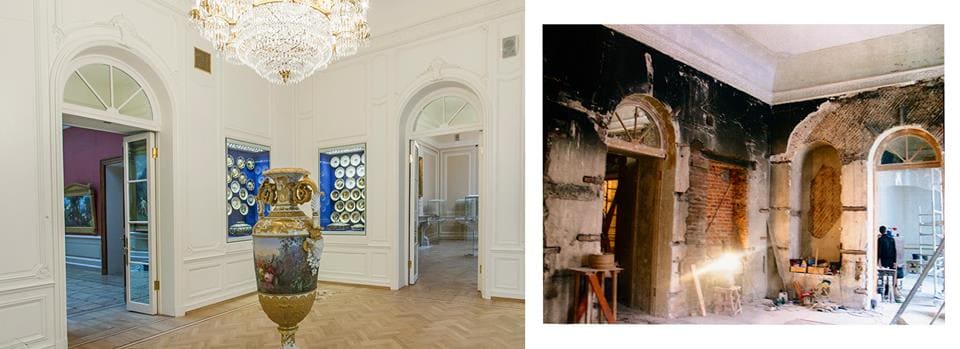The palace located at Fontanka Embankment 21 was built at the end of the 18th century. The first owners of the palace were Count and Countess Vorontsov. In 1799 the palace was pirchased by the wife of Hofmeister Dmitriy Naryshkin, Maria Antonovna. The Naryshkin palace was renowned for its parties and concerts and was visited by Alexander Pushkin, Petr Vyazemsky, Ivan Krylov, Nikolay Karamzin, Karl Bryullov, and even Emperor Alexander I.
It was here that the Petersburg nobility gave its famous ball on April 29, 1834 to mark the occasion of heir to the throne Alexander Nikolaevich (who would later become Emperor Alexander II) becoming an adult. To fit all the guests for this event - and almost 1500 were expected - a temporary wooden pavilion was built in the inner court by Alexander Bryullov and a doorway to the neighboring Abaza House was cleared.
In 1844, in honor of the coming wedding of the heir to the house Sofya Lvovna Naryshkina to Petr Pavlovich Shuvalov, architects Bernar de Simon and Nikolay Yefimovich Yefimov began renovation of the palace in Neorenaissance style. The wedding was in 1846, beginning the Shuvalov era of the palace's life.
The next important stage of renovation was completed according to the 1859 design of Rudolf Bogdanovich Berngard. Ventilation was built into the palace, it was equipped with hot air heat from Amosov ovens in the basement, and skylights were placed in a number of rooms.
The last owners of the Palace - Pavel Petrovich Shuvalov and his wife Yelizaveta Vladimirovna (nee Baryatinskaya) - added to the house a spectacular collection of art from the Naryshkins.
At the beginning of First World War, Yelizaveta Shuvalova carefully hide the paintings and other decorative art items in the many hiding places, and gave the palace over to become a hospital for the wounded.
On August 1, 1918, the palace was nationalized. From 1919 to 1925 it was home to the Nobility museum, whose exhibition was a recreation, as close as possible, of the palace interior as it was under the last Shuvalovs. The art collection was placed in the State Museum Fund and divided among various Russian museums.
From 1927-1929 the Naryshkin-Shuvalov palace was the location of first a printing house, and then the House of Engineering and Technical Workers. In the 1930s it housed a design organization, and in 1941 it became Local Anti-Aircraft Defense Headquarters.
During the years of the Siege of Leningrad the palace was significantly damaged from artillery fire and bombing. A direct hit from a demolition bomb completely destroyed the three-floor courtyard wing. A firebomb that went through the roof and landed in the attic directly above the Alexander Hall did even more damage. A fire broke out; flame engulfed the wooden structure and attic floor, and the roof and ceiling, with its unique painting by Giovanni Scotti, fell in.
In 1963 a decision was made to open a House of Friendship and Peace with Peoples of Foreign Countries in Shuvalov Palace. For almost 30 years the palace remained without major repairs, gradually deteriorating.
In 2006 the government of Saint Petersburg decided to lease Shuvalov Palace to the Link of Times Historical and Cultural Foundation, for a period of 49 years. Extremely complex restorative works were undertaken from 2006 through 2013 in order to return the palace to its former grandeur.

On November 19, 2013, at Fontanka Embankment 21, Fabergé Museum opened, providing residents and guests of Saint-Petersburg with the unique opportunity to see the extraordinary collection of the Link of Times Foundation.